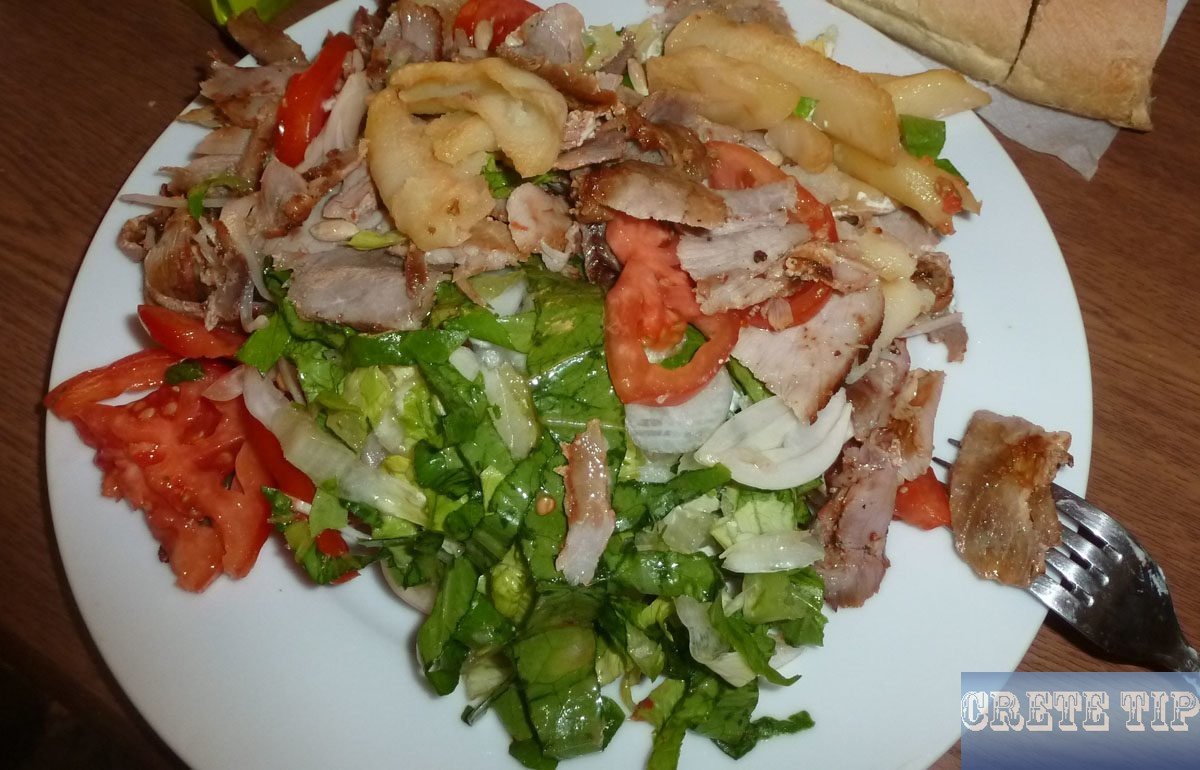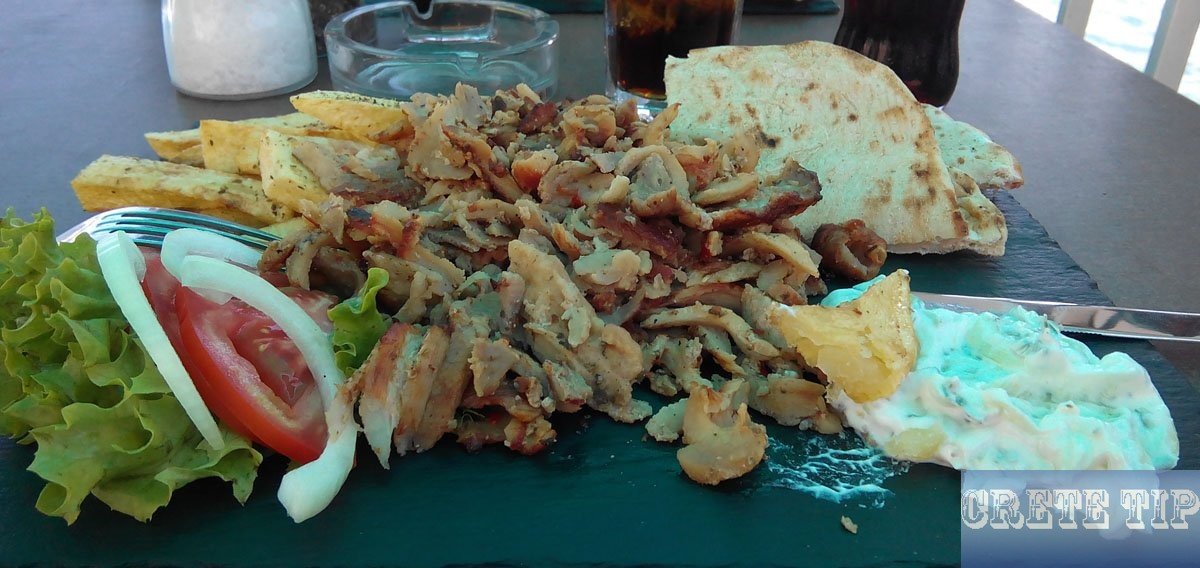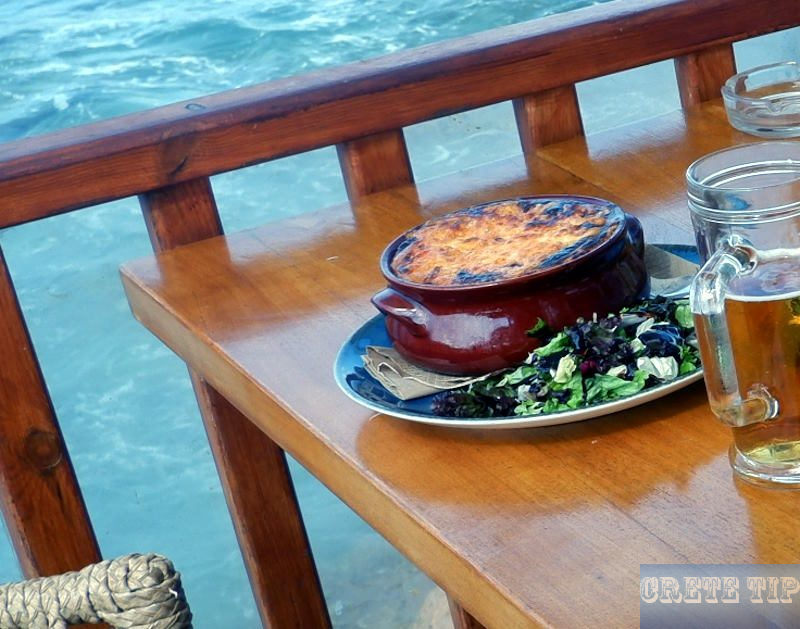Baking Greek New Year’s cake Vasilopita: The Secret Family Recipe Revealed.

Historical Significance
We love how the Vasilopita cake brings a bit of magic to the New Year’s celebrations. This tasty Greek tradition has roots going back centuries. It’s all tied to Saint Basil, a kind-hearted chap who lived in the 4th century.
The story goes that Saint Basil wanted to give money back to the poor without making them feel ashamed. Clever bloke that he was, he had the idea to bake coins into bread. When the loaves were handed out, each person got a surprise gift inside!
We think it’s brilliant how this ancient tale lives on in today’s Vasilopita custom. Now, we hide a single coin in the cake for good luck. Whoever finds it in their slice is meant to have an extra lucky year ahead.
The way we cut the cake is special too. We always save the first slice for Jesus, the next for Mary, and the third for Saint Basil himself. It’s a lovely way to remember the cake’s holy origins.
For the Greeks, baking and sharing this cake is more than just a yummy treat. It’s how they honour their past and welcome in the new year with hope. Plus, who doesn’t love the excitement of possibly finding that lucky coin?
Ingredients Overview

Let’s explore the key components that make Vasilopita so special. We’ll look at the flour, sweeteners, and other essential ingredients that give this Greek New Year’s cake its unique flavour and texture.
Flour Choices
We typically use plain flour for our Vasilopita. It’s the backbone of the cake, giving it structure and a soft crumb. For a lighter texture, we might mix in some cake flour. If we’re feeling healthy, we can swap in a bit of wholemeal flour, but not too much or the cake will be heavy.
We usually need about 3 cups of flour for a standard-sized Vasilopita. It’s important to measure the flour correctly – we spoon it into the measuring cup and level it off, rather than scooping directly from the bag.
Sweeteners
Sugar plays a big role in Vasilopita, both for sweetness and texture. We often use white sugar, about 1 to 1.5 cups for a typical recipe. Some bakers like to use a mix of white and brown sugar for added depth.
For the topping, we dust the cake with icing sugar after it’s cooled. This gives it a festive, snowy look. We might use about 1/4 cup for this.
Here’s a quick breakdown of sugar amounts:
- White sugar for batter: 1-1.5 cups
- Icing sugar for topping: 1/4 cup
Leavening Agents
To help our Vasilopita rise and become fluffy, we use leavening agents. Baking powder is the most common choice. We usually add about 2 teaspoons to our mix.
Some recipes call for yeast instead, which gives a slightly different texture. If using yeast, we’d need about 2 1/4 teaspoons (one packet) of active dry yeast.
We always make sure our leavening agents are fresh. Old baking powder or yeast can lead to a flat, dense cake.
Dairy Products
Dairy adds richness and moisture to our Vasilopita. We use several dairy products:
- Butter: About 1 cup (2 sticks), softened
- Milk: 1/2 to 1 cup, preferably whole milk
- Greek yoghurt: Some recipes use 1/2 cup for extra moisture
We always use room temperature dairy products. This helps them mix better with the other ingredients.
Eggs are also crucial. We typically use 3-4 large eggs. They bind the ingredients and add structure to the cake.
Additional Flavourings
What makes Vasilopita truly special are its flavourings. We love to add:
- Vanilla extract: 1-2 teaspoons
- Orange zest: From 1-2 oranges
- Lemon zest: From 1 lemon
- Orange juice: 1/4 cup (optional)
Some bakers like to add a pinch of cinnamon or cloves for warmth. We might sprinkle blanched slivered almonds on top before baking.
Nutritional Values
While Vasilopita is a treat, it’s good to know what we’re eating. Here’s a rough estimate per slice (1/12 of a cake):
- Calories: 300-350
- Fat: 15-20g
- Protein: 5-7g
- Carbohydrates: 35-40g
It’s not a low-calorie food, but it does provide some nutrients:
- Vitamin C from citrus
- Calcium from dairy
- Iron from eggs and flour
- Potassium from milk and oranges
Remember, these values can vary based on the exact recipe and slice size.
Preparation Techniques
Making Vasilopita is a cherished tradition in the Greek households. We’ve perfected a few key techniques over the years to ensure our New Year’s cake turns out just right. Let’s explore the essential steps for creating this special treat.
Mixing Methods
We start by creaming butter and sugar until light and fluffy. This crucial step adds air to the batter, resulting in a tender crumb. Next, we beat in eggs one at a time, followed by vanilla extract for flavour. In a separate bowl, we sift together flour, baking powder, and a pinch of salt. We fold these dry ingredients into the wet mixture gently, alternating with milk. This method prevents overmixing, which could lead to a tough cake.
To add extra flair, we sometimes fold in zest from oranges or lemons. The citrus notes complement the sweet cake beautifully. For texture, we might stir in chopped almonds or walnuts.
Baking Process
We preheat our oven to 175°C and prepare a 25cm round cake tin. Greasing the tin well and lining the bottom with parchment paper ensures easy removal later. We pour the batter into the tin, smoothing the top with a spatula.
The cake bakes for about 45-50 minutes. We keep a close eye on it, checking with a skewer after 40 minutes. When it comes out clean, we know it’s done. Overbaking can dry out the cake, so timing is key.
Once baked, we let the Vasilopita cool in the tin for 10 minutes before turning it out onto a wire rack. This cooling period helps the cake set and makes it easier to handle.
Coin Insertion
The most exciting part of making Vasilopita is adding the lucky coin. We wrap a clean coin in aluminium foil for safety. Once the cake has cooled completely, we gently push the coin into the bottom of the cake.
Some of us prefer to insert the coin before baking, but this can be tricky. If you choose this method, push the wrapped coin into the batter just before putting the cake in the oven.
Remember, whoever finds the coin in their slice is said to have good luck for the year ahead!
Serving and Decoration
We love making Vasilopita extra special with beautiful decorations and creative serving ideas. Let’s explore some ways to make this Greek New Year’s cake truly shine.
Serving Suggestions
We often serve Vasilopita at midnight on New Year’s Eve. It’s a lovely tradition to gather family and friends around as we cut the cake. We usually slice it into enough pieces for everyone, plus a few extra for symbolic reasons.
We like to cut the first piece for Saint Basil, the second for our home, and the rest for each person present, starting with the oldest. The excitement builds as everyone checks their slice for the hidden coin – whoever finds it is said to have good luck for the year ahead!
For a nice touch, we sometimes serve the cake on a pretty platter with fresh fruit or a dollop of whipped cream on the side. It goes brilliantly with a cup of Greek coffee or hot chocolate too.
Decorative Finishes
We enjoy getting creative with how we decorate our Vasilopita. A classic look is to dust the top with icing sugar, using a paper stencil to create the new year’s date. It’s simple but so effective!
For a fancier finish, we sometimes spread a layer of vanilla glaze over the cooled cake. While it’s still wet, we sprinkle chopped nuts or colourful dragées on top.
Fruit garnishes can look stunning too. We’ve tried arranging thin orange slices in a pretty pattern or scattering pomegranate seeds for a pop of colour. Fresh mint leaves add a lovely green touch.
For a personal twist, we’ve used small letter cutters to spell out ‘Happy New Year’ in Greek on top of the cake. It always gets a great reaction from our guests!
Storing and Preservation

I’ve found that keeping our Vasilopita fresh is key to enjoying it over time. Here are the top tips for storing this special Greek New Year’s cake.
Short-Term Storage
For the first few days, I like to wrap our Vasilopita in cling film or pop it in an airtight container. This keeps it moist and tasty. I always make sure it’s completely cool before storing, or we’ll end up with condensation.
If it’s quite warm in our kitchen, I’ll pop it in the fridge. It stays good for about 5 days this way. When we want a slice, I take it out 30 minutes before to let it come to room temp. The flavours are so much better then!
Sometimes, I’ll cut it into slices first. This makes it dead easy to grab a piece when we fancy one.
Long-Term Keeping
If we’ve made too much Vasilopita (is there such a thing?), freezing is brilliant. I wrap individual slices in cling film, then foil. Into a freezer bag they go!
They keep well for up to 3 months. When we’re ready to eat, I just take out what we need and let it thaw overnight in the fridge. A quick zap in the microwave, and it’s almost as good as fresh!
For whole cakes, I double-wrap in cling film and foil. It’s a bit trickier to thaw, though. I leave it in the fridge for 24 hours, then on the counter for a few hours.
Special Variations

Vasilopita is a versatile cake that can be adapted to suit different dietary needs and preferences. We’ve experimented with various ingredients and methods to create unique twists on this traditional Greek New Year’s treat.
Alternative Ingredients
We love trying new flavours in our Vasilopita. Instead of orange zest, we’ve used lemon or lime for a zesty kick. We’ve swapped out vanilla extract for almond or rose water, giving the cake a lovely aroma. For a boozy version, we add a splash of brandy to the batter. It adds depth and warmth to the flavour.
Greek yoghurt is another brilliant addition. We fold it into the mixture for extra moisture and tanginess. Sometimes we toss in a handful of dried fruits or nuts for texture. Chopped apricots, cranberries, or pistachios work wonderfully.
We’ve even made a chocolate Vasilopita by adding cocoa powder to the batter. It’s not traditional, but it’s absolutely delicious!
Gluten-Free Options
For our gluten-sensitive friends, we’ve crafted a tasty gluten-free Vasilopita. We use a mix of gluten-free flours like rice flour, almond flour, and tapioca starch. This blend gives a texture similar to the original.
We add a bit of xanthan gum to help bind the ingredients. It prevents the cake from being too crumbly. We’ve found that adding an extra egg helps with moisture and structure too.
Our gluten-free version might be a tad denser, but it’s just as flavourful. We make sure to grease the pan well and dust it with gluten-free flour. This stops the cake from sticking.
Vegan Adaptations
We’ve successfully made vegan Vasilopita that’s just as scrumptious as the traditional version. We replace eggs with a mixture of ground flaxseeds and water. It works brilliantly as a binder.
Instead of butter, we use vegetable oil or melted coconut oil. Canola oil is a good neutral option that doesn’t affect the flavour. For milk, we opt for plant-based alternatives like almond or oat milk.
We’ve experimented with aquafaba (the liquid from canned chickpeas) as an egg replacer. It helps create a light and fluffy texture. To replace the honey glaze, we make a simple syrup with sugar and water.
Our vegan Vasilopita might not be exactly like the classic, but it’s a delightful alternative for those following a plant-based diet.
Festive Traditions

In a Greek family, Vasilopita holds a special place in the New Year’s celebrations. We gather ’round as the clock strikes midnight, eagerly awaiting the cutting of this sweet, citrusy cake.
The excitement builds as we slice into the Vasilopita. Who will find the hidden coin? It’s a moment of pure joy and anticipation.
We believe the lucky finder will have a prosperous year ahead. It’s a charming tradition that brings us closer together and starts the new year on a cheerful note.
Vasilopita isn’t our only festive treat. We often pair it with kourabiedes, those melt-in-your-mouth almond biscuits dusted with icing sugar.
Our New Year’s Day wouldn’t be complete without this Greek cake centrepiece. It’s more than just a dessert; it’s a symbol of heritage and hopes for the coming year.
We love how Vasilopita brings a touch of Greek culture to our table. It’s a delicious way to honour the roots and create lasting memories with loved ones.
Practical Tips for Success
We’ve baked many vasilopita cakes over the years and picked up some handy tricks along the way. Here are our top tips for success:
Use room temperature ingredients. This helps everything mix together smoothly.
Don’t overmix the batter. Gently fold in the flour just until combined to keep the cake light and fluffy.
Grease the tin well. Nothing’s worse than a stuck cake! We like to use butter and a dusting of flour.
Insert the coin safely. Wrap it in foil and push it into the bottom of the baked, cooled cake.
Let it cool completely before decorating. This prevents the icing from melting off.
Add flavour with zest. We love adding orange or lemon zest to the batter for a citrusy kick.
Measure carefully. Baking is a science, so precise measurements are key for the perfect texture.
Don’t peek! Resist opening the oven door while baking, as this can cause the cake to sink.
With these tips, you’ll be baking delicious vasilopita in no time. It’s such an easy and fun dessert to make for New Year’s celebrations!
Frequently Asked Questions

We’ve gathered some common questions about Vasilopita to help you bake this special Greek New Year’s cake. Let’s explore the tradition, recipes, and baking tips.
How can I bake a Vasilopita if I don’t have any philotimo on hand?
Don’t worry if you’re short on philotimo! This Greek concept of pride and honour isn’t a physical ingredient. The most important thing is to bake with love and care. Focus on using fresh ingredients and following the recipe closely.
What is the traditional method for incorporating the coin into the Vasilopita?
We usually push a clean coin into the bottom of the cake after it’s baked. Some folks wrap the coin in foil first. Make sure to let everyone know there’s a coin inside before serving!
Could you suggest a reliable recipe for a classic Vasilopita?
A basic Vasilopita recipe includes flour, sugar, butter, eggs, and milk. Add orange zest and vanilla for flavour. Mix wet and dry ingredients separately, then combine. Bake at 180°C for about 45 minutes.
Is there a difference between the Cypriot Vasilopita recipe and other regional variations?
Cypriot Vasilopita often includes more spices like cinnamon and cloves. It might be denser than other versions. Greek mainland recipes tend to be lighter and more cake-like.
What’s the significance behind the Vasilopita tradition during New Year’s celebrations?
Vasilopita honours Saint Basil and brings luck for the new year. We cut the cake at midnight on New Year’s Eve. The person who finds the coin in their slice is said to have good fortune for the year ahead.
Can you tell me how the Vasilopita compares to other New Year cakes globally?
Vasilopita is unique with its coin tradition. But many cultures have special New Year’s cakes. The French have Galette des Rois, while Italians enjoy Panettone. These cakes often symbolise hope and renewal for the coming year.



